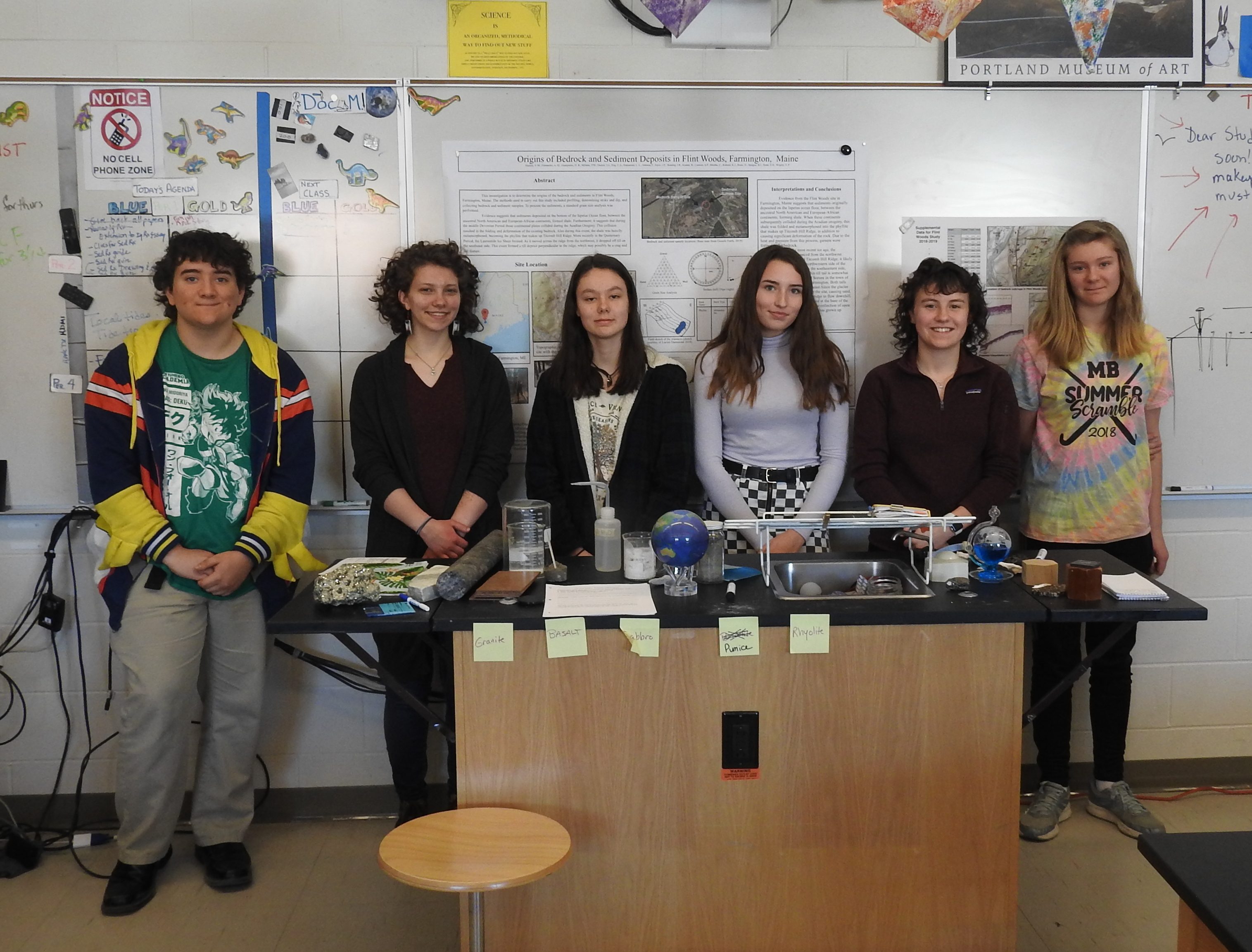
FARMINGTON – A group of Mt. Blue High School students attended a regional scientific conference in Portland last week, presenting two years of data regarding the geological history of Flint Woods.
Teacher Patricia Millette’s Honors Earth Science classes typically pick a local area to study, creating a hypothesis on its formation and conducting tests to either confirm or disprove that theory. Last year’s class chose Flint Woods because one student lived nearby, Millette said.
Students profiled terrain in Flint Woods, including phyllite bedrock which is part of the larger Titcomb Hill Ridge. Finding evidence that it was created roughly 350 million years ago during the Acadian orogeny event that created the Appalachians, the students began studying the sediment deposits. Their surveys found that the topography was suggestive of past glacial activity; one side of the ridge line scraped clear of sediments that were deposited on the other side.
Five parallel transects were taken by the students, identifying missing material that sophomore Alejandro Fernandez likened to someone scooping out sediment with an ice cream scoop. This led the students to hypothesize that a glacier had moved down the northwest side of the Titcomb Hill Ridge, dumping the sediment on the southeast side.
That marked the end of the students’ research; they simply ran out of time when the school year ended. When the next group of freshmen arrived this year, Millette suggested they pick up where last year’s group left off.
The students took more samples around Powderhouse Hill, checking the variation of sediment size. Julia Daly, a geology professor at the University of Maine at Farmington assisted by providing the class access to Ground Penetrating Radar to determine the depth of sediment up the hill. Freshman Grace Bell said that the GPR determined that the sediment layer was thinner near the top of the ridge, while exposed bedrock was found on the northwest side.
Last week, both groups of students were in Portland for the Geological Society of America’s Northeastern Section Meeting, where they explained their findings during an open hall-style presentation. The trip was funded through contributions from Gear-Up, the Maine Mineralogical and Geological Society and the Farmington Rotary Club. Robert Rogers assisted with printing the students’ posters.
Separately, Millette presented her ideas during a science education conference, discussing how culture and society could impact the progression of how science is taught.





Did any of the students ever find the base of the actual Powder House?
Very impressive!!
Yes, a great mystery unsolved. Any leads on the “Powderhouse” would be appreciated.
Great job Mt. Blue.
Great work!
Mt Blue and these students are fortunate to have a such a “laboratory” for the studying the effects of glacial activity almost at their door step! How about a “paper” on “Glacial Lake Farmington” next?